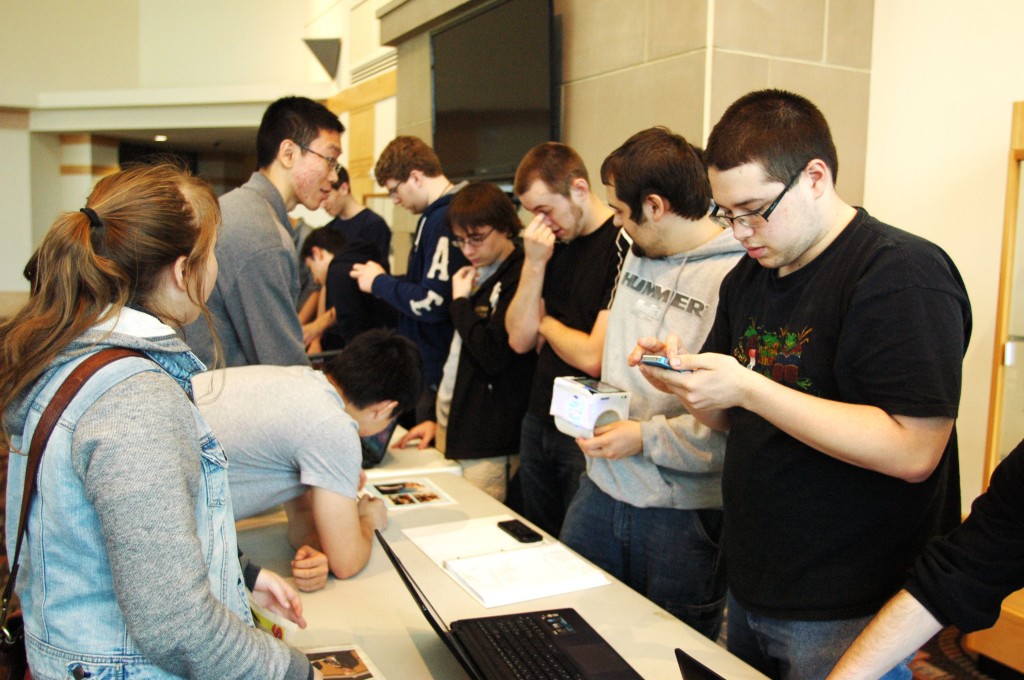
More than a dozen members of the CoRE program gathered in the Chenango Champlain Collegiate Center (C4) to present their semester projects on graphic imaging, computer designs and engineering.
CoRE, which stands for Computers, Robotics and Engineering, is a special interest housing program in Dickinson Community for students who share similar interests in technology and research.
There are a number of living-learning communities in the residence halls for students with similar academics interests to live in close proximity to one another, but according to Joe Palazzolo, president of the program and a sophomore majoring in computer science, CoRE is among the oldest of these communities.
According to Palazzolo, CoRE students are enrolled in a one-credit class in which they must complete a research or engineering project by the end of the term, but do not have specific guidelines or a rubric. Friday afternoon’s event was a culmination of those students’ work.
“Every year, everyone on the floor takes on a project that they choose themselves,” Palazzolo said. “Everyone is encouraged to learn about a new technology, solve a problem or just learn something new.”
Due to the fact that many CoRE students are computer science majors, many of the presentations featured a programming language or other graphic skills that the students learned during the semester.
Shane Thompson, a sophomore double-majoring in computer science and mathematics, used ray tracing, a method of rendering graphics that he said creates a more accurate picture than traditional methods. Thompson demonstrated an example of a sphere and pyramid, and said the tracing produced better shadows and reflections than graphics that attempt to simulate real light.
“Right now, people approximate images using polygons, which create imperfect, blocky images like in video games,” Thompson said. “Ray tracing can create a much more accurate representation of the real world than this. Pixar uses it now for their movies, but it takes a long time to render images this way.”
Thompson said that the technology could be used in future video games, but that it was not yet robust enough.
For his project, Thomas Kump, a senior majoring in computer science, created a piece of wearable technology.
“I made a wrist-mounted computer that runs Raspbian, which is a Linux-based operating system,” Kump said. “I bought plastic from Amazon that you can mold at 140 degrees and made parts of the casing by heating it up in a toaster.”
According to Kump, the project was still an early model, but it could run a word processor and operate like a digital notepad.
Other projects included a robot designed to react to changes in light by rattling its box, a quail egg incubator and a text-based game coded in python, a programming language where users can create their own adventures by making their own folders and text files.
Another student created a piece of exercise equipment from PVC pipes and demonstrated the variety of exercises that could be done on a seemingly simple construction.
Palazzolo said the variety of projects was important to the program.
“We’re one of the closest and oldest communities on campus,” Palazzolo said. “Everyone does their own projects individually, but we all learn about each other’s.”


